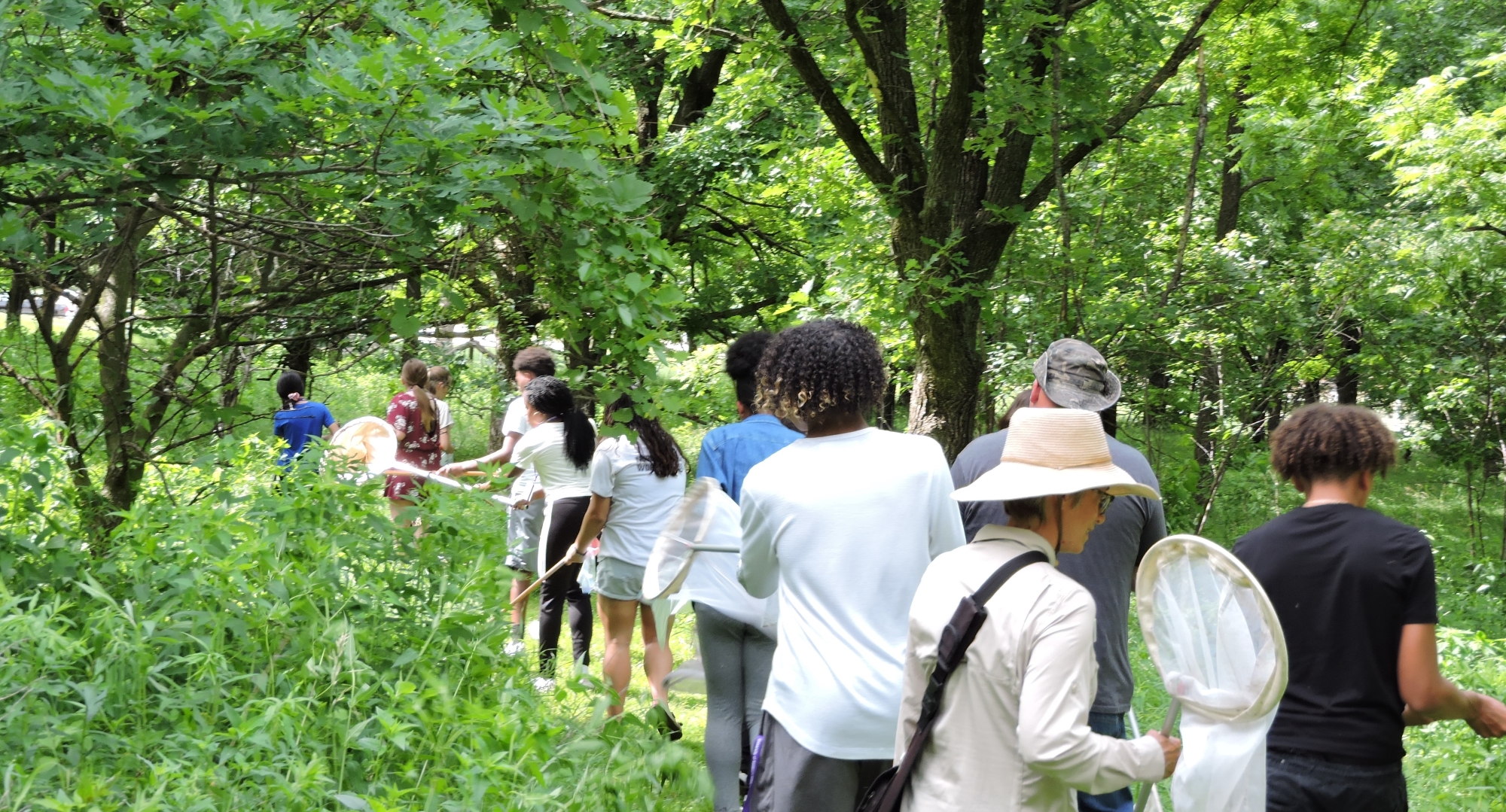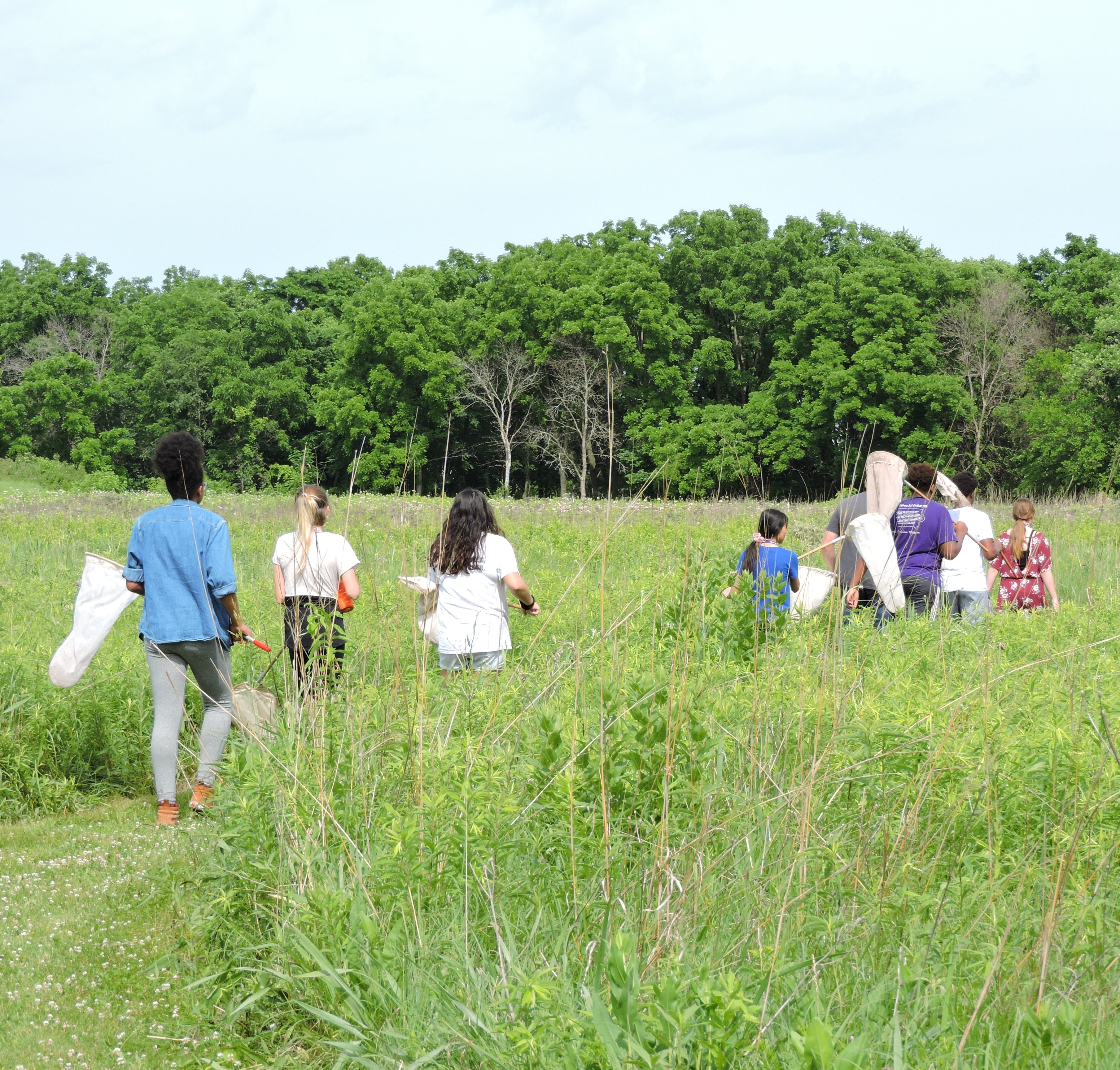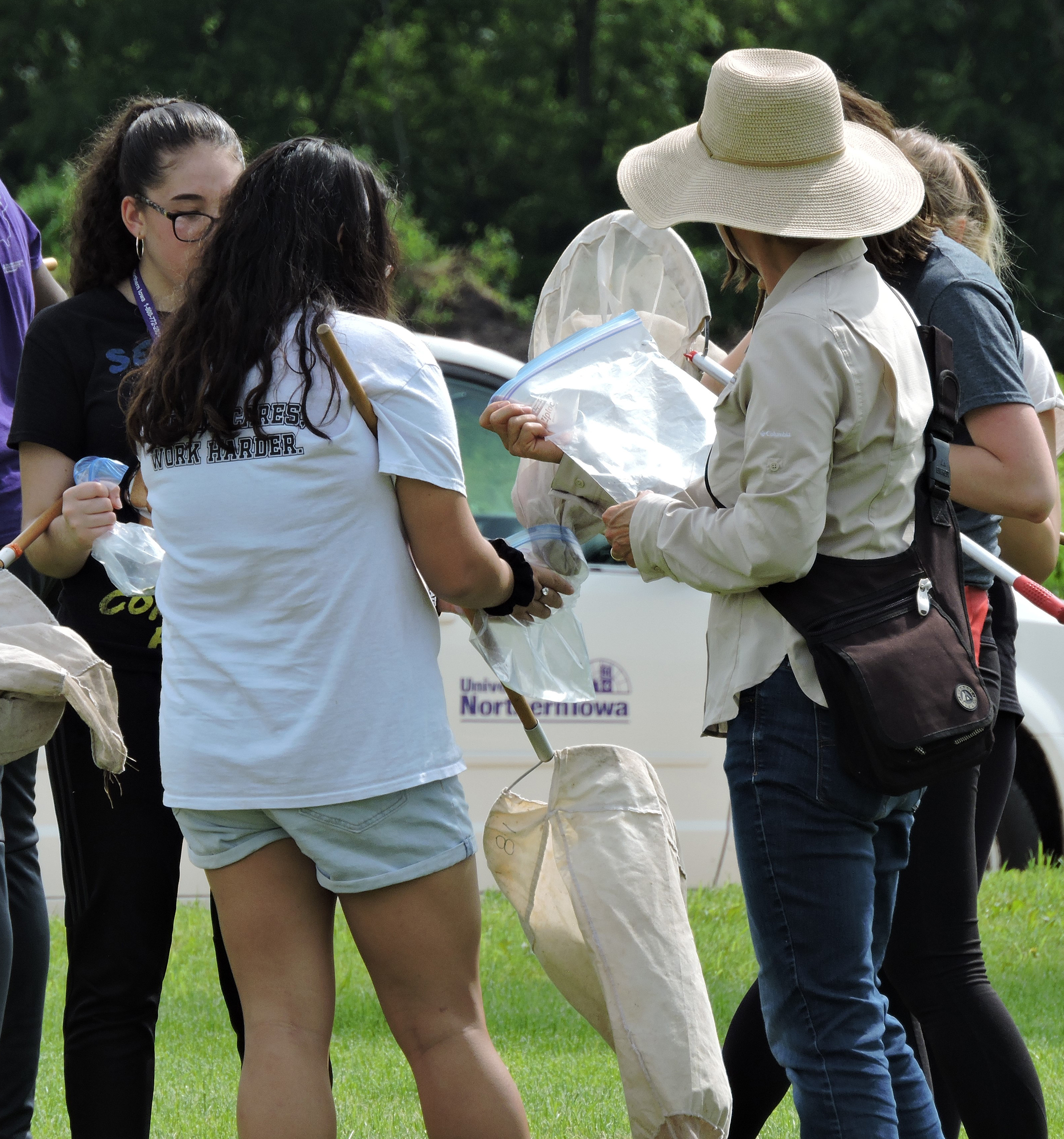New to Nature

The pages below were produced and written to help the formal educator think about how they would like to incorporate nature or the outdoors into their teaching. Every school, classroom, teacher, and students within it are unique and there is no one-size-fits-all approach. Consider all possibilities and simply do what works best for you and your students.
Some of the following information and assistance was sourced from Into Nature, a guide written by teachers for teachers to connect to nearby nature.
Nature Barriers
Connecting students to nature is a healthy building block not only for a child’s life span development, but for a sense of care of our environment and where we live. The more we can educate our students through nature, research shows the more healthy they become and we develop future stewards of our lands.
However, simply taking your classes outside or cultivating an outdoor learning space for your students takes time, may present challenges or fears, and there is a relative unknown involved. It’s important to recognize this is normal for most teachers, even veteran educators who may regularly use the outdoors and nature as a teaching tool from year to year. We hope to alleviate some of these barriers and anxiety the teacher faces when considering the possibilities of taking your students outdoors.
- “But what about my standards?” may be a common question for the educator hoping to take their classes into nature.
This is a perfectly valid question and tie-ins to your Iowa State Standards should be made. However, standards are written in a way that gives you, the educator, the ability to create the best lessons and activities for your classes and students. They’re far more flexible than you may think, even down to your performance-based standards. In this vein, it’s important to think about what standards and units would best be implemented by incorporating slices of the outdoors and nature into them.
- “What’s the first step?” “How do I begin?”
While it will look different for every classroom, some helpful pages have been created for assistance in understanding how and where to start. Refer to the Getting Started Guide, the general Materials List to prepare (both below), and this table of outdoor-based activities and teaching extensions.
- “Doesn’t learning need to happen while directly engaged in the outdoors or in nature?”
Of course! And as the teacher trust that it will. Whether that is through the student’s self exploration, group tasks, you being the ‘guide on the side,’ or connections you make back in the classroom to what they experienced outdoors. Refrain from attempting to provide some type of measurable or deliverable for everything your students do when it comes to teaching in nature. Unless you and your classes are extremely experienced learning outdoors, the less technical and rigid your activities should generally be. As you and your students gain more experience, the more you may ask of them. And yourself!
- “I took my class outside and it was a nightmare! Impossible to manage.”
Did you discuss going outside beforehand? What expectations were set? Consider communicating the values and impact of the outdoors before taking your classes outside. Create a nature contract and talk about some “Do’s and Don’ts”. Create tangible goals or reasoning for taking your students outside. Be prepared and have the necessary materials. And let others (administration) know you will be outdoors. It can help to stop by the bathroom before going outside and also set outdoor boundaries as well as a meeting spot.
- “It’s daunting to think about taking 30 students outside at once.”
Create buddy systems, partners, and/or group your students to alleviate classroom management issues. Assign roles to students for helping with materials and items that may be brought outdoors. Consider reaching out to other teachers or co-teachers to partner up in outdoor activities. Reach out to parents or PTOs and ask them for volunteer assistance, many would love to visit your classes for a trip outside. The more concrete of a plan you have for the student activity, the more engaged they will be. Even if that includes options and flexible choices.
Remember that it is important to try not to define every learning experience for your individual students. Learn with them through discovery and being the guide through an inquiry-based approach. Use open-ended tasks and questions to guide your classes. As your classes gain more experience with you through the outdoors, the frequency of the visits may increase or become more regularly folded into your lessons. And the more likely a development of conservation minded students will extend into the future for the state of Iowa and beyond!
General Outdoor Education Materials List
Try to use this list as a starting point to consider what you and your classes may need. Develop it with your students and involve them in the process. Consider creating kits ahead of time for certain activities, certain classes, or groups of students to help act as moderators and helpers for you.
- Attendance list, medical chart, school preparedness guides, and red/green placards
- Phone or walkie-talkie
- Whistle
- First aid kit/bandages
- Pencils & pencil sharpeners, chalk, other writing utensils
- Ziploc bags or small storage containers
- Tablets or technology for journaling, taking pictures, etc.
- Clipboards
- Paper
- Water bottles
- Magnifying glasses/hand lenses
- Tweezers for prodding in soil/grass
- Garbage bag for trash found
- Insect repellent, sunscreen
- Field guides
- Containers or large container for nature collections

Getting Started Questions and Guide

Questions and prompts regarding your students:
- Consider printing a tabled class list and make individual notes on who may struggle being outdoors. Create an initial survey for your students asking them about their comfort levels and experiences being outside.
- Address student fears and concerns directly as a class. Communicate that it is normal and appropriate to have anxiety with aspects of learning that are unfamiliar. Consider establishing a buddy or group system for your kids.
- Think about whole group challenges that may exist or present themselves for each class you plan to take outside.
- What benefits will be gained by your students as a class/individually?
- How will you ‘hook’ the students or capture their attention and excitement for learning outdoors?
- Final thoughts: Think about the preparation involved for your classes. Do you need to visit the area first? What materials will you need? Is parental or administrative support needed? Will I need a backup activity or plan for bad weather?
Questions for you, the teacher:
- Regarding teaching outdoors, do you have: No experience, some to little experience, or experienced?
- What aspects of taking your classes outdoors intrigues or excites you?
- What worries or concerns do you wish to address?
- What times of year or seasons will be best suited for you and the sequence of your units?
- Fall, Spring, Winter
- Are there goals in mind for how often you would like to teach outside?
- Once/season, Once/month, Once/week, Once/day
- What topics, standards, or units would you like to focus on outdoors? Are there other subjects that could be incorporated into your own while outside?
- Do you anticipate that your administration will be supportive and why?
- What are you hoping to achieve or gain personally by taking your class outdoors?



